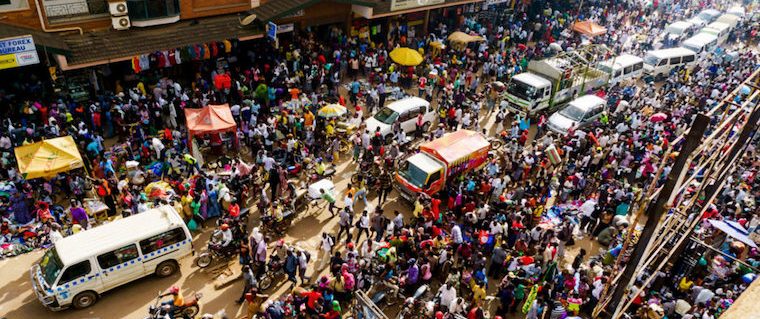If we talk about we talk about hurting the planet, who exactly is the “we”?
Every year, human activity moves more sediment and rock than all natural processes combined, including erosion and rivers. This might not shock you. In fact, you’ve probably seen similar soundbites circulating online, signals of the sheer scale of how we’re terraforming the planet in the era of the Anthropocene. Natural and social scientists argue passionately about almost everything Anthropocenic, from the nuances of nomenclature to the start-date of the new geological epoch, but most agree on one thing: the Earth will outlive humanity. What’s in doubt is how long we will populate the planet, and under what conditions.
But who, exactly, are ‘we’?
 Consider the cover of Nature in March 2015, in which two Earths, one blue-green and one grey, are entangled in a human body. The title emblazoned across the man’s six-pack invites us to see this body as representative of ‘thehuman’. But there’s no such thing as a generic human, of course; the image repeats the centuries-old conflation of human with white man. Perhaps the artist sought to subvert such racist overtones by obscuring the man’s eyes, making him an unseeing subject blind to the damage he’s wreaked on his body and his planet. Still, the image impels a common critique of the Anthropocene concept: it attributes ecological collapse to an undifferentiated ‘humanity’, when in practice both responsibility and vulnerability are unevenly distributed.
Consider the cover of Nature in March 2015, in which two Earths, one blue-green and one grey, are entangled in a human body. The title emblazoned across the man’s six-pack invites us to see this body as representative of ‘thehuman’. But there’s no such thing as a generic human, of course; the image repeats the centuries-old conflation of human with white man. Perhaps the artist sought to subvert such racist overtones by obscuring the man’s eyes, making him an unseeing subject blind to the damage he’s wreaked on his body and his planet. Still, the image impels a common critique of the Anthropocene concept: it attributes ecological collapse to an undifferentiated ‘humanity’, when in practice both responsibility and vulnerability are unevenly distributed.
Read into Professor Gabrielle Hecht’s thoughts on this topic on AEON.com
Source: https://aeon.co/essays/if-we-talk-about-hurting-our-planet-who-exactly-is-the-we?utm_source=Aeon+Newsletter&utm_campaign=823df93380-EMAIL_CAMPAIGN_2018_02_05&utm_medium=email&utm_term=0_411a82e59d-823df93380-70411397




